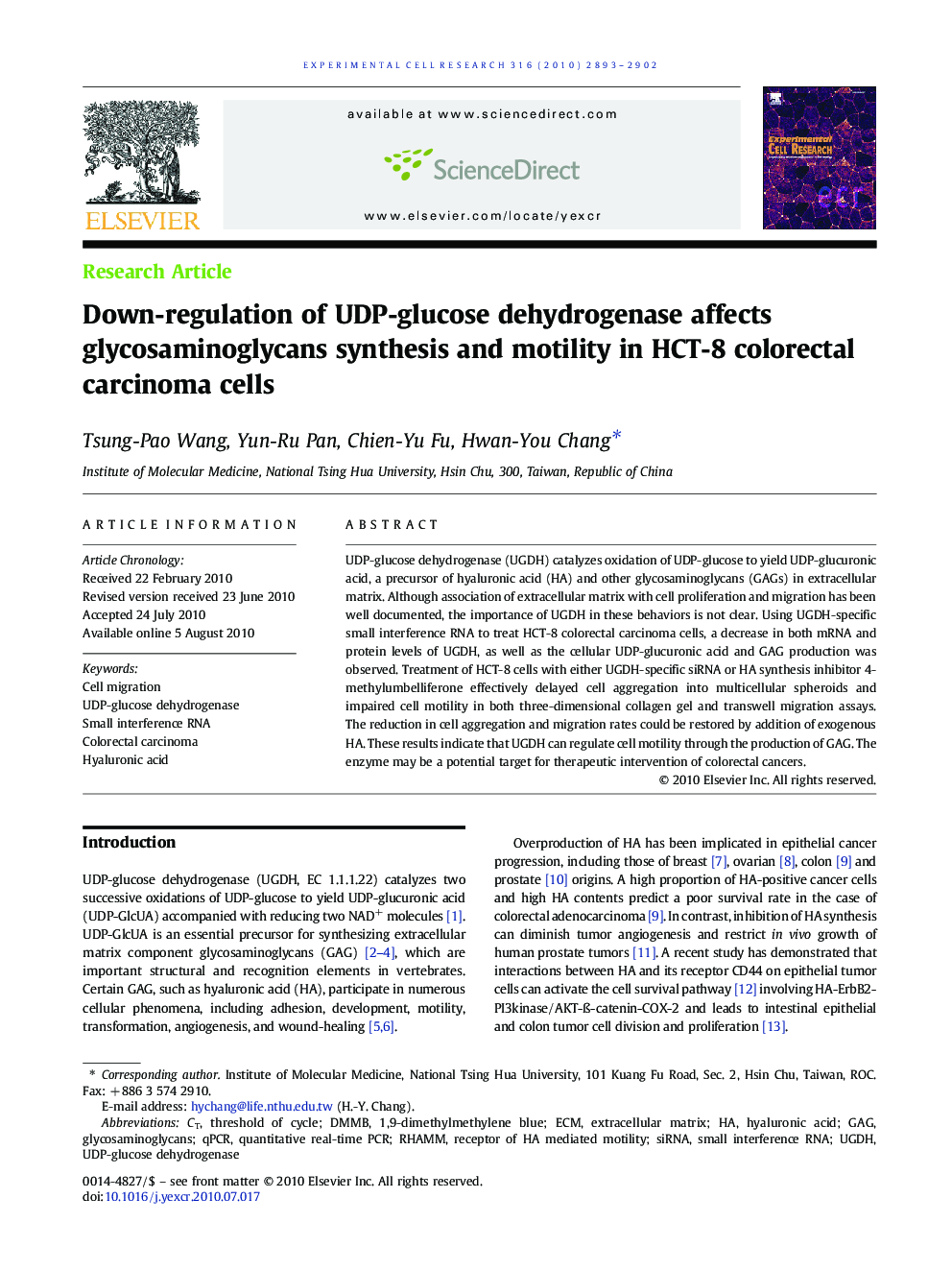| Article ID | Journal | Published Year | Pages | File Type |
|---|---|---|---|---|
| 2131969 | Experimental Cell Research | 2010 | 10 Pages |
UDP-glucose dehydrogenase (UGDH) catalyzes oxidation of UDP-glucose to yield UDP-glucuronic acid, a precursor of hyaluronic acid (HA) and other glycosaminoglycans (GAGs) in extracellular matrix. Although association of extracellular matrix with cell proliferation and migration has been well documented, the importance of UGDH in these behaviors is not clear. Using UGDH-specific small interference RNA to treat HCT-8 colorectal carcinoma cells, a decrease in both mRNA and protein levels of UGDH, as well as the cellular UDP-glucuronic acid and GAG production was observed. Treatment of HCT-8 cells with either UGDH-specific siRNA or HA synthesis inhibitor 4-methylumbelliferone effectively delayed cell aggregation into multicellular spheroids and impaired cell motility in both three-dimensional collagen gel and transwell migration assays. The reduction in cell aggregation and migration rates could be restored by addition of exogenous HA. These results indicate that UGDH can regulate cell motility through the production of GAG. The enzyme may be a potential target for therapeutic intervention of colorectal cancers.
